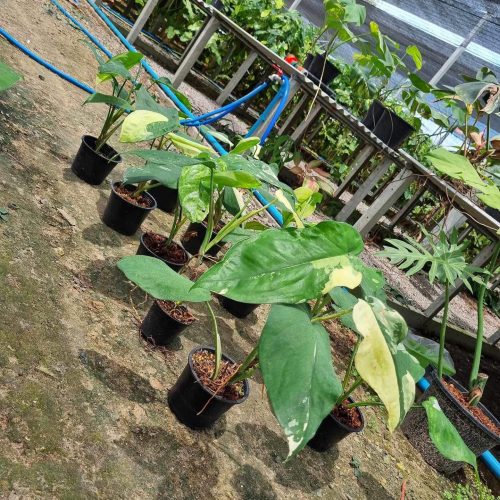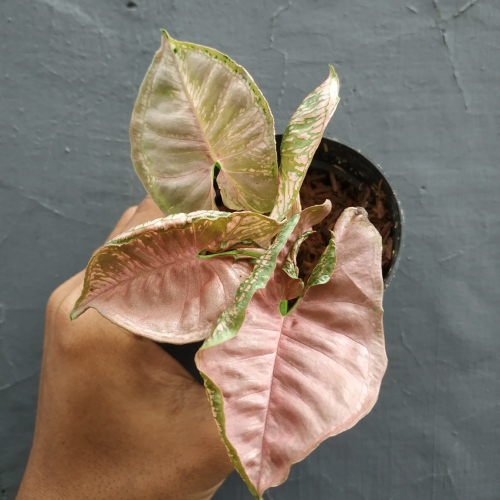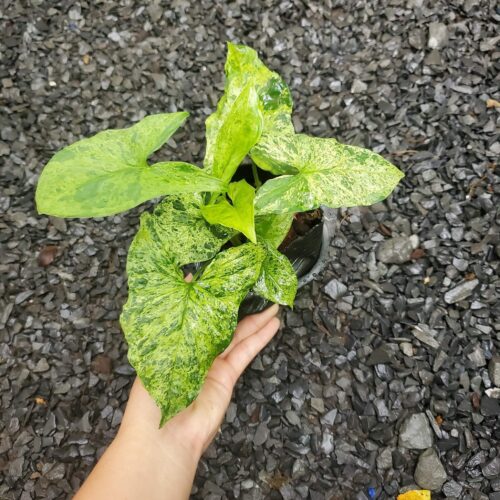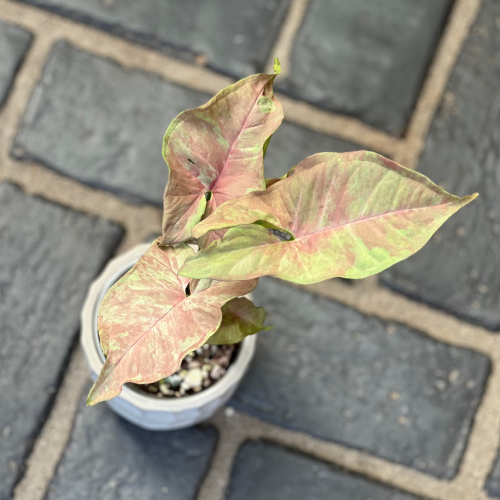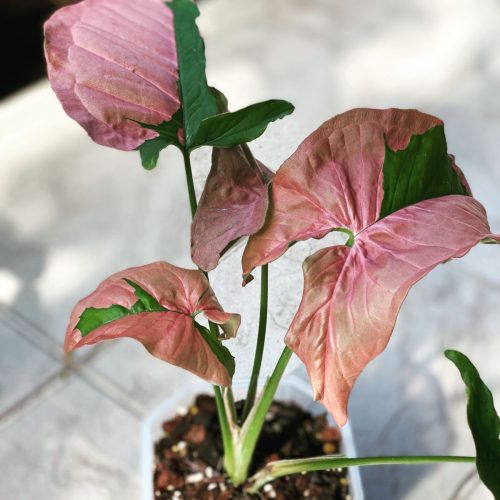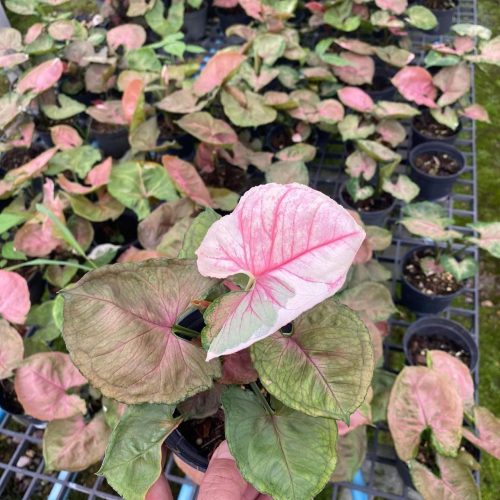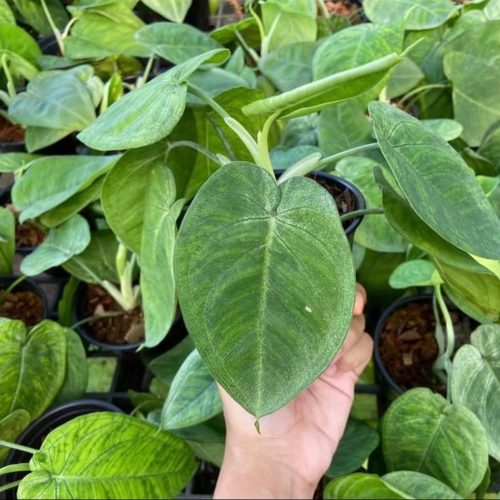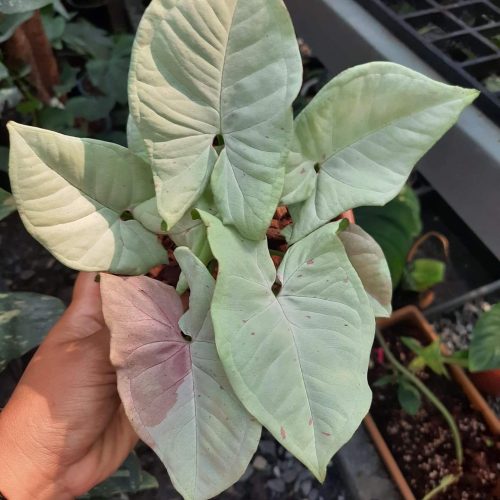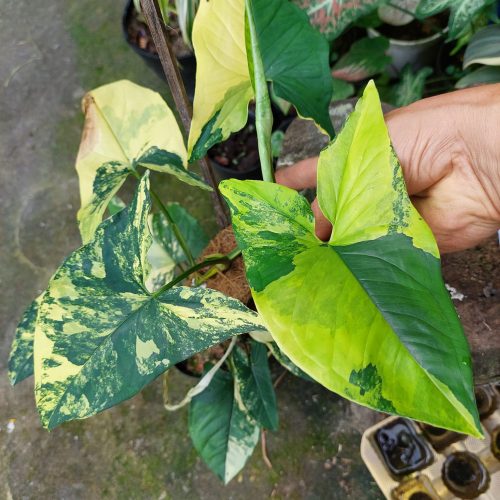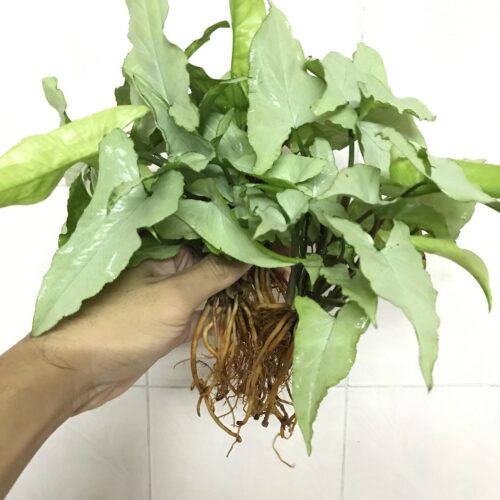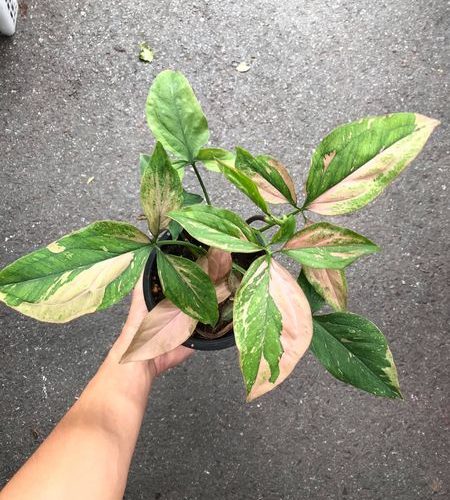The Syngonium Moonlight plant, with its striking foliage and resilient nature, has fast become a favourite among houseplant enthusiasts. But what exactly is this plant, and how do you care for it?
Introduction to Syngonium Moonlight Plant
Origin and History
The Syngonium Moonlight plant is native to tropical regions of Central and South America. Known for its vibrant green and white leaves, it is a popular choice for indoor gardening across the world.
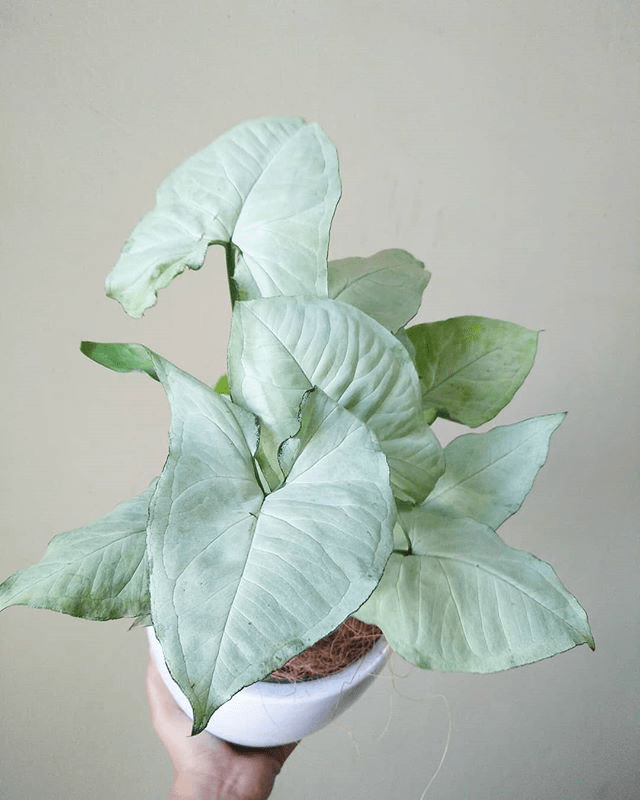
Characteristics of Syngonium Moonlight Plant
Appearance
With its heart-shaped leaves that exhibit a bright, moonlight-white center and green edges, the Syngonium Moonlight is truly a sight to behold.
Growth Habit
The Syngonium Moonlight has a robust growth habit, with vines that can reach several feet in length. It’s perfect for hanging baskets or as a climbing plant with a little support.
Lifespan
With proper care, this perennial plant can grace your indoor spaces for many years, adding a dash of tropical charm.
How to Care for a Syngonium Moonlight Plant
Light Requirements
Syngonium Moonlight prefers bright, indirect light. Direct sunlight can scorch its leaves, so a shaded spot with good natural light is ideal.
Watering Routine
Allow the top inch of soil to dry out between waterings. Overwatering can lead to root rot, a common issue with this species.
Soil and Fertilizer Needs
A well-draining soil mix is vital for the Syngonium Moonlight. Regular feedings with a balanced houseplant fertilizer during the growing season will keep it happy and healthy.
Temperature and Humidity Preferences
This plant prefers a warm, humid environment. It thrives in temperatures between 60-75°F (16-24°C) and appreciates regular misting.
“For comprehensive care tips that ensure your Syngonium Moonlight thrives, explore our detailed Syngonium Care guide.”
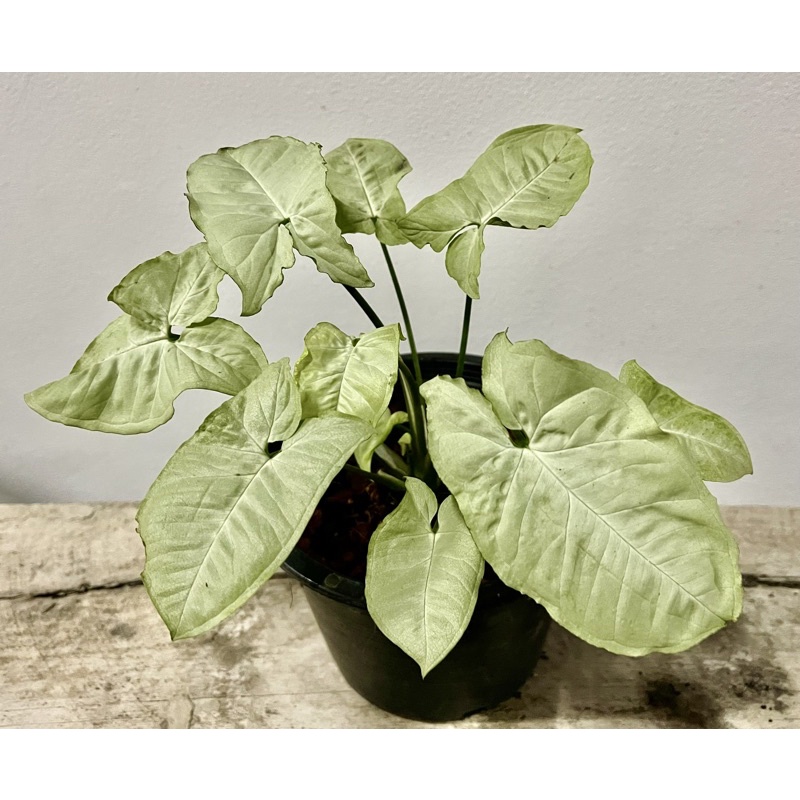
Propagation Techniques for Syngonium Moonlight
Stem Cuttings
Propagation via stem cuttings is the most common method. Simply take a healthy stem cutting, place it in water or soil, and wait for roots to develop.
Water Propagation
Another easy method is water propagation. Place the cutting in a container of water, changing the water regularly until roots appear.
Common Problems and How to Solve Them
Yellowing Leaves
This might be a sign of overwatering or inadequate light. Adjust watering schedule or move the plant to a brighter location.
Droopy Leaves
This could indicate underwatering or low humidity. Increase watering frequency or mist the plant to raise humidity.
Benefits of Owning a Syngonium Moonlight Plant
Besides its visual appeal, the Syngonium Moonlight plant can improve air quality by absorbing toxins, making it a great addition to any home or office. “Learn more about the lifespan and benefits of growing Syngonium plants, including the Moonlight variety, in our article Syngonium Benefits: 5 Key Benefits of Growing Syngonium.”
Where to buy Syngonium Moonlight? Benefits from importing plants from Thailand
- Shipping: Door to door shipping, fast and safe with Dragon Courier
- Biodiversity: Thailand is known for its rich biodiversity, including a wide variety of aroid species. This diversity allows importers to access a broad range of unique and exotic aroid plants.
- Quality and Health of Plants: The suitable climate helps the plants grown here stay healthy and of high quality.
- Cost-Effectiveness: Due to favorable growing conditions and efficient production methods, Thai aroid plants can often be more cost-effective compared to those from other countries.
- Access to Hybrid Varieties: Thai growers are often involved in the development of new hybrid aroid varieties, offering unique plants that may not be available from other sources.
Syngonium species are the most sought after by aroid plant lovers
Conclusion
The Syngonium Moonlight plant is an excellent choice for both novice and experienced plant owners. With its unique appearance and easy care requirements, it’s no wonder this plant is a beloved addition to many indoor gardens.
Frequently Asked Questions
- Does Syngonium Moonlight plant purify the air? Yes, it is known to improve indoor air quality by absorbing toxins.
- Can this plant survive in low light conditions? It prefers bright, indirect light but can tolerate lower light conditions.
- How often should I water my Syngonium Moonlight plant? This depends on various factors like light, temperature, and humidity. Generally, allow the top inch of soil to dry out between waterings.
- Can the Syngonium Moonlight plant grow outdoors? While it’s primarily an indoor plant, it can grow outdoors in a shaded spot in warm, tropical climates.
- Is Syngonium Moonlight toxic to pets? Yes, it can be toxic to pets if ingested due to calcium oxalate crystals present in the plant.

